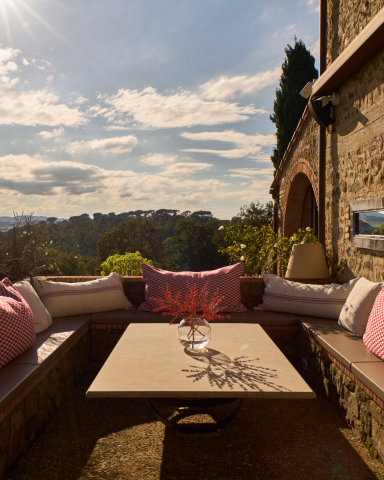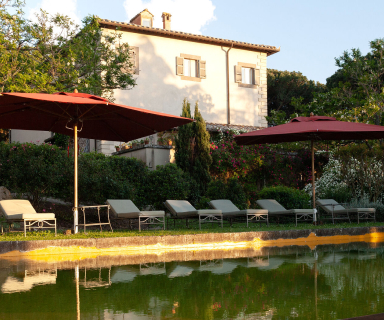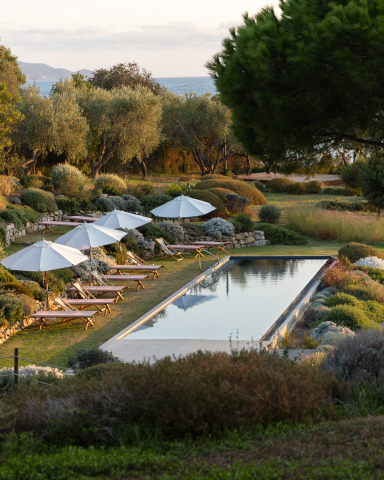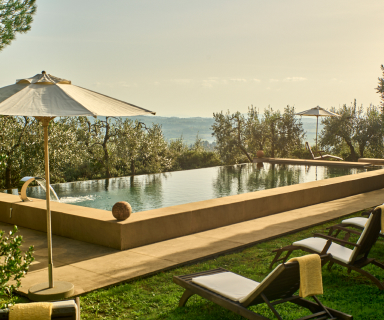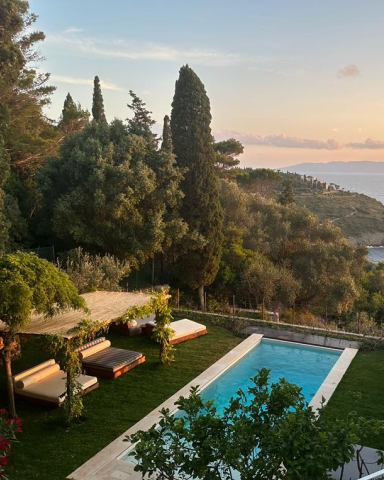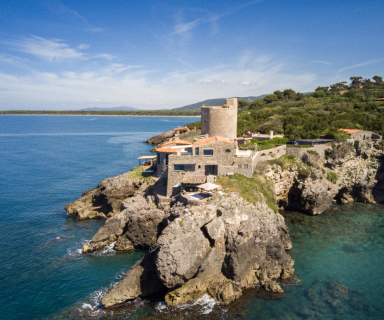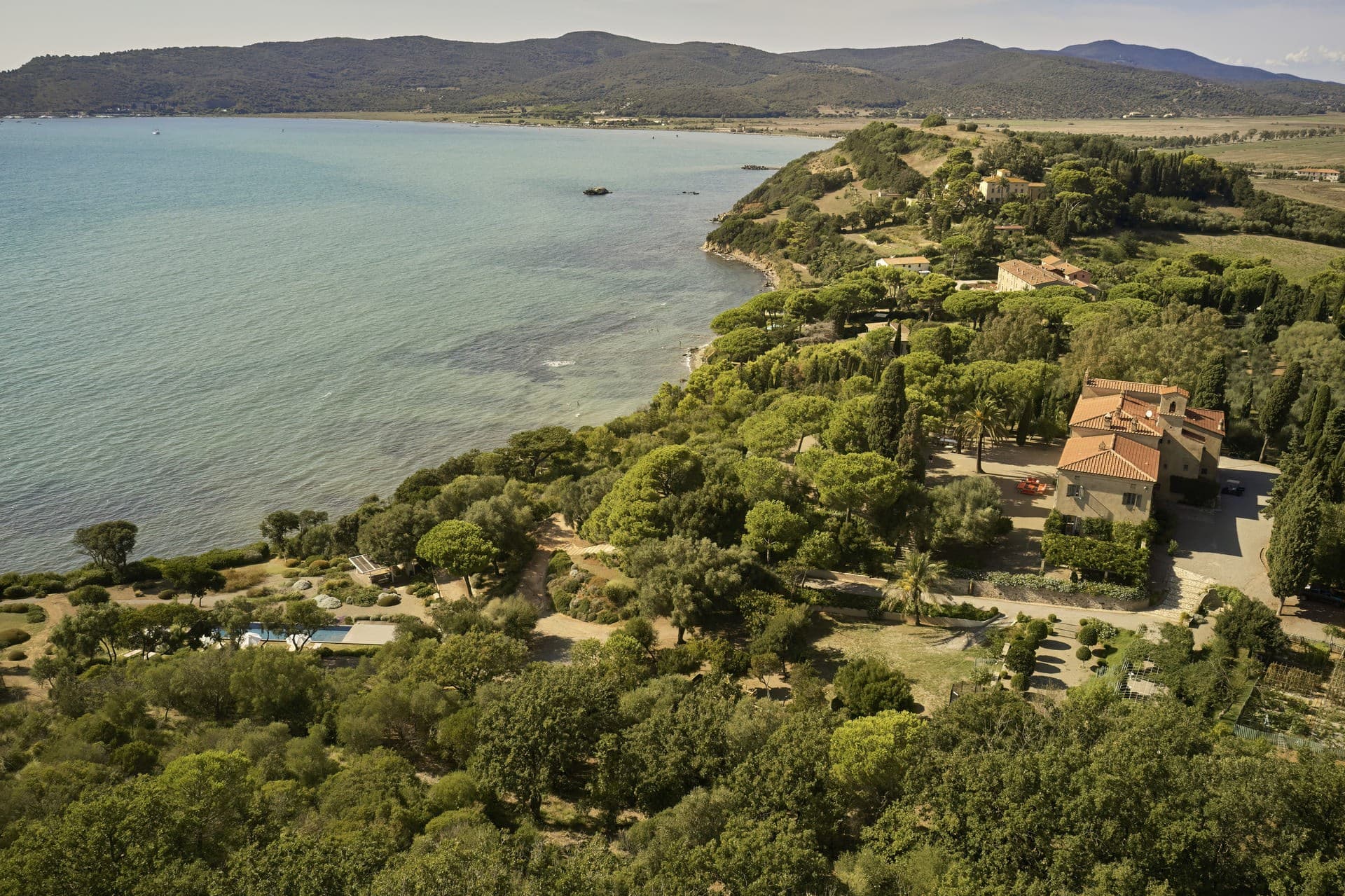
Best Places to visit in Tuscany
The Tuscan Coast
Encompassing seemingly endless stretches of sand, curvaceous bays, nature reserves, historic seafront towns, lagoons and lively summer resorts, Tuscany’s coastline extends for nearly 300km along the Tyrrhenian Sea.
Search villas in Tuscany
What to see on Tuscany's coastline
Many visitors to Tuscany, especially those from abroad, justifiably tend to concentrate their time in Tuscany visiting its artistic treasures, its picture-perfect towns, and its timeless hill-top villages. But for us, no holiday in Toscana would be complete without spending at least a day on the beach, swimming in the Tyrrhenian, looking out towards the Tuscan Archipelago, and dining on seafood to the sound of the sea.
Join us on a whirlwind tour of Tuscany’s coastline from the north to the south.
From Marina di Carrara to Livorno
The harbour town of Marina di Carrara, which sits under the gaze of the marble-rich Apuan Mountains, signals the beginning of over 20km of continuous sandy beaches that include some of Tuscany’s most popular and lido-heavy seaside resorts, including upmarket Marina di Massa and Forte dei Marmi, and the working fishing port of Viareggio. After Viareggio comes the coastal Nature Reserve of Migliarino, San Rossore and Massaciuccoli, whose 23,000 hectares comprise pine woods, a rich array of flora and fauna, dunes, river deltas and some 25km of unspoilt sandy beaches. One of our favourites here is Spiaggia della Bufalina, where, apart from a couple of lidos, there is nothing except sea and sand backing on to the green of the reserve. Continuing on our journey, and passing through the pretty seaside town of Marina di Pisa and the resort town and sandy beach of Tirrenia, we come to the bustling, historic port town of Livorno (aka Leghorn), whose fine renaissance architecture is often overlooked by visitors to Tuscany.
Of interest for music lovers is Torre del Lago, birthplace of Puccini and home to the annual festival dedicated to his music.
The Parco dei Monti Livornese and Castiglioncello
The rugged coastline south of Livorno is presided over by the Parco dei Monti Livornesi, a 1,300-hectare expanse of forested hills, remote villages, and walking trails. The SS1 road hugs the coast, offering both great driving and fabulous views, while at the same time connecting a series of rocky bays, cliff-top viewing points and villages. Before you arrive at the little resort town of Quercianella, you will see the impressive sight of Castello Sonnino, a neogothic construction built on top of a renaissance fortress, rising proudly on its own promontory above the sea.
The sandy bay of Quertecano heralds our arrival at Castiglioncello, a fashionable resort whose fabulous neo-classical villas and mansions date back to the late 19th century. Its photogenic good looks made it a haven for Italian impressionist painters (the Macchiaioli). Then, from the 1950s, it began to attract the stars of Italy’s burgeoning film industry, including Alberto Sordi, Marcello Mastroianni, Vittorio Gassman and Luchino Visconti, who transformed it into a glamourous destination.
Marina di Bibbona, Bolgheri and Massa Marittima
Passing through the little seaside towns of Vada and Marina di Cecina, we come to a 30km-stretch of gorgeous sand that's fringed by intense, emerald greenery. Midway along is Marina di Bibbona, which is popular with families and a series of pristine beaches with plenty of room for everyone to spread out and find their own spot. Also known as the Etruscan Coast, this area has several other small towns of interest, including Castagneto Carducci and Piombino.
About 7km inland is the legendary village of Bolgheri, famed for its Super-Tuscan red wine, Sassicaia, and its 13th-century castle. A little further to the east, meanwhile, is the Nature Reserve of the Colline Metallifere, an extensive, mountain range with peaks rising to over 1,000m. Known since Etruscan times for its metal-ore mining, this vast area is home to great walking trails, and numerous mediaeval towns and villages, including Sassetta, Suvereto, Campiglia Marittima, and Massa Marittima.
The Golfo di Baratti and Populonia

Piombino and the Golfo di Follonica
On the southern flanks of the headland of Monte Massoncello is Piombino, the main port of departure for those visiting the Tuscan islands of Elba and Pianosa. The former, which is just 10km away, rises vividly across the water, tempting those on the mainland to hop over.
To the east and southeast of Piombino, meanwhile, is the perfect crescent of the Gulf of Follonica. Home to mile upon mile of sandy beaches (with special mention to the one at Torre Mozza) and the Sterpaia Coastal Park, it is popular not only with sea lovers, but also with sunset-watchers: imagine the spectacle of the fiery, golden-red orb slowly vanishing into the sea behind Elba. Beyond the Gulf of Follonica, densely wooded hills rise from the sea. There are a few unspoilt, idyllic beaches down on the coast here, including those of Cala Violino, Cala Civette, and Capo Civinni.
Punta Ala and Castiglione della Pescaia
Continuing south, we come to another headland, on the eastern tip of which stands Punta Ala. An upmarket resort famous for its sailing regattas and its marina, it was once home to Luna Rossa, a Louis Vuitton and Prada Cup-winning yacht.
10km southeast is one of Tuscany’s loveliest coastal towns, Castiglione della Pescaia, whose long and beautiful sandy beaches are bisected by the mouth of the River Bruna. Its red-brick, terracotta-roofed houses climb up the sides of a hill and wrap around a mediaeval castle and the impressive 16th-century Church of St John the Baptist. The views from here are breathtaking: the islands of Montecristo and Giglio rise on the horizon, while to the south the promontory of Monte Argentario (one of our later stops) eases out into the sea.
Marina di Grosseto and the Parco della Maremma
The coast below Castiglione della Pescaia is a long, gracious curve of sand fringed by blue waters to one side and the emerald woodland of the WWF Oasis of San Felice to the other.
About half way down is the little seaside town and harbour of Marina di Grosseto, whose parent city, Grosseto, lies some 12km inland. With its fine historic centre, its 13th-century Cathedral of San Lorenzo and its impressive Museo Archeologico e d'Arte della Maremma, Grosseto is very much worth a visit.
Some 8km south of Marina di Grosseto, on the south side of the mouth of the River D’Ombrone, is one of southwestern Tuscany’s greatest natural attractions, the Regional Park of the Maremma. Flanked by untouched sandy beaches, including those of Torre di Collelungo, Cala di Forno and Cala Salto del Cervo, the park comprises forested hills rising to over 400m, a diverse array of flora and fauna, a salt lagoon, walking trails, ruined towers, abbeys, and much, much more.
Costa d’Argento and Monte Argentario
At the southern tip of the Maremma park is the port and marina of Talamone, which signals the beginning of the Costa d’Argento, a long, curvaceous stretch of sandy beach that runs virtually uninterrupted for over 16km all the way down to one of Tuscany’s most inspiring spots: Monte Argentario.
This quasi-island is a wonder of topography. It is connected to the mainland by a pair of beach-fringed isthmuses, one to the north and one to the south. In between them is a saltwater lagoon, which itself is home to the slender peninsula and charming, historic town of Orbetello.
A bridge from Orbetello crosses the lagoon, linking it umbilically to Monte Argentario, a hilly, many-valleyed slice of paradise with an embarrassment of natural beauty, numerous coves and beaches (some of which are only accessible by boat), evocative towers dotting the landscape, and two attractive, historic towns: Porto Santo Stefano in the north, and Porto Ercole in the southeast.
From Ansedonia to the border with Lazio
Our journey down Tuscany’s coast is virtually over, but there's still time for a a visit to Ansedonia, a small town that hugs the coastline below the Roman archaeological site of Cosa.
Next comes yet another long stretch of sand that includes the beaches of Ansedonia, Capalbio, and Macchiatonda, and the salt-water lagoon of Burano.
Finally, we reach Tuscany’s border with the region of Lazio.

Let us help craft your dream villa escape
Our Villa Specialists regularly visit each of our villas, so they’re perfectly placed to answer all your questions and help you find your perfect home from home.

